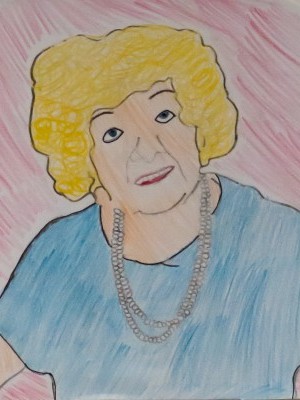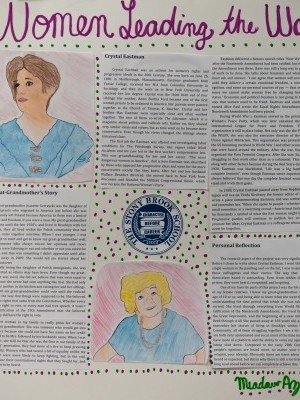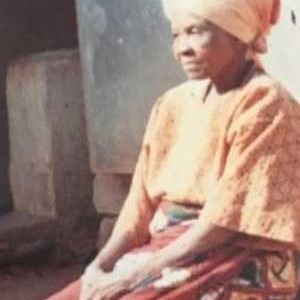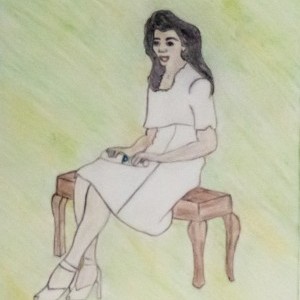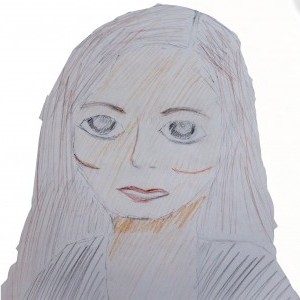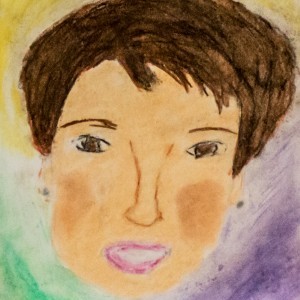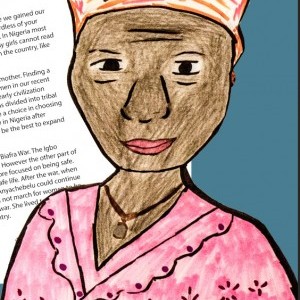Meadow Azaz
The Stony Brook School | Stony Brook, NY | 9-12th Grade
Inspirational Family Member
My Great-Grandmother
My great-grandmother, Jeanette Gorczycki, was the daughter of Polish immigrants who immigrated to America just before she was born. Her family left Poland because America to them was a land of opportunity and freedom, if you were a man. My great-grandmother could not vote until the late 1920’s and lived in Brooklyn with her four siblings; they all lived within the Polish community that had formed and come together over time.
When I was younger, I was lucky enough to meet and get to know my great-grandmother well. She was someone who always voiced her opinions and views whether you were listening or not and whether or not you asked for her opinion, and that was something I didn’t appreciate until after she passed away in 2009. She would tell me stories about her working in factories. Especially being the daughter of Polish immigrants, she was not as respected as others may have been. Even though my great-grandmother was vocal, she did not believe that women were equal to men because she had never seen anything like that. She had only ever seen her mother in the kitchen and raising her and her siblings. It wasn’t until my great-grandmother could vote that she realized this was not the way that things were supposed to be. She believed in everyone’s rights that came from the Constitution. Whether every man had the right to vote or every man had free speech, it wasn’t until the ratification of the 19th Amendment that she believed women really did have the right to vote.
The first woman in my family to really press for women’s rights was my grandmother. She was someone who would get into fights at Sears because she could not have her name on her credit card, she had to be “Mrs. followed by her husband’s name.” When I was talking to her, she told me that she was the first in our family of the “Bra burning” generation, they had more of a fire to keep pressing on for equality. Women who had tasted a bit of equality unlike my grandmother were more likely to keep fighting, but in the end, women did use their constitutional rights that they fought for, and they did want to be heard.
Historical Figure I Admire
Crystal Eastman
Crystal Eastman was an activist for women’s rights and progressive ideals in the 20th Century. She was born on June 25, 1881 in Marlborough, Massachusetts. Eastman graduated from Vassar College, received her M.A from Columbia University in Sociology, and then she went on to New York University and received her law degree. Crystal was the third born out of four siblings. Her mother, Annis Burtha Ford, became one of the first women priests to be ordained in America. Her parents were pastors together at the church of Thomas K. Beecher. Crystal and her brother Max Eastman were especially close and often worked together. The two of them co-wrote The Liberator, which was a magazine about politics and radical arts. Early on, they shared very similar ideals and values, but as time went on, he became more conservative. Even though his views changed, the siblings always remained close.
The first job Eastman was offered was investigating labor conditions for The Pittsburgh Survey. Her report titled Work Accidents and the Law led to the first workers’ compensation law. This was groundbreaking for her and her career. “The most dangerous woman in America,” that is how Eastman was described by those who opposed her progressive ideas and supported the more conservative society that they knew. After she divorced her husband Wallace Benedict, she moved back to New York from Wisconsin and founded the Militant Congressional Union, which later became the National Woman’s Party.
Eastman delivered a famous speech titled “Now We Can Begin” after the Nineteenth Amendment had been ratified, but even though the amendment was established, there was still a long way to go and a lot of work to be done. She talked about feminism and what a feminist must ask and answer, “I can agree that women will never be great until they achieve a certain emotional freedom, a strong healthy egotism, and some un-personal sources of joy — that in this inner sense we cannot make woman free by changing her economic status.” Economic and political freedom was not going to be the only way that women need to be freed. Eastman and another activist named Alice Paul wrote the Equal Rights Amendment after the Nineteenth Amendment had been passed.
During World War I, Eastman served as the president of the Woman’s Peace Party, which was later renamed the Women’s International League for Peace and Freedom. This peace organization is still in place today. Not only was she the President of the WILPF, she was also the executive director of the American Union Against Militarism. This organization was protesting against the US becoming involved in World War I and other economic views that were based around the military. After the war, Eastman also organized the First Feminist Congress. After the war, Eastman was struggling to find work other than as a columnist. This happened along with other factors because during the Red Scare during 1919-1920, Eastman was blacklisted. “Life was a big battle for the complete feminist,” even though Eastman never experienced it, she always believed that one day the complete feminist would truly be equal and reach their goals.
In 1928, Crystal Eastman passed away from nephritis, but her legacy will live on. Freda Kirchwey the former editor of The Nation wrote a piece commemorating Eastman to honor and remember her. “When she spoke to people—whether it was to a small committee or a swarming crowd—hearts beat faster. She was for thousands a symbol of what the free woman might be.” Several Progressive parties would continue to publish her writings and promote her ideas. Crystal Eastman is a suffragette whose name will never be forgotten.
What the Project Means to Me
The research aspect of this project was very significant for me. Before I chose to write about Crystal Eastman, I went through every single woman in the painting and on the list, I was inspired by all of these suffragettes and their stories. The way that they made themselves heard is astounding. Even from within the walls of prison, they were heard, recognized, and inspiring.
One of my favorite parts of this project was the life story of one of my female relatives. I knew my great-grandmother up until the age of 10 or so, and being able to learn what she went through, and understanding the time period which she was subjected to is surreal. She lived through everything from World War I, to the ratification of the Nineteenth Amendment. She lived through both the Great Depression, and the beginning of a new millenium, she lived through it all. She passed away at 103 years old, and I can still remember her stories of living in Brooklyn within their Polish Community, all of them struggling together. I am a lot like her, we are both very opinionated and vocal, most of the time too vocal, but I have more of a platform and the ability to voice my opinion without being shut down. Compared to the early 20th Century, today people’s opinions are heard more, no matter your race, gender, religion, or identity. Obviously there are times when they are not heard or respected, but this is why there is still a lot to be done and a long road ahead before we can completely achieve this.
Explore the Archive
More From This Class
Click on the thumbnails below to view each student's work.Deadline Extended
There's still time to join Women Leading the Way.
Become a part of our storytelling archive. Enroll your class today.
Join the Project

